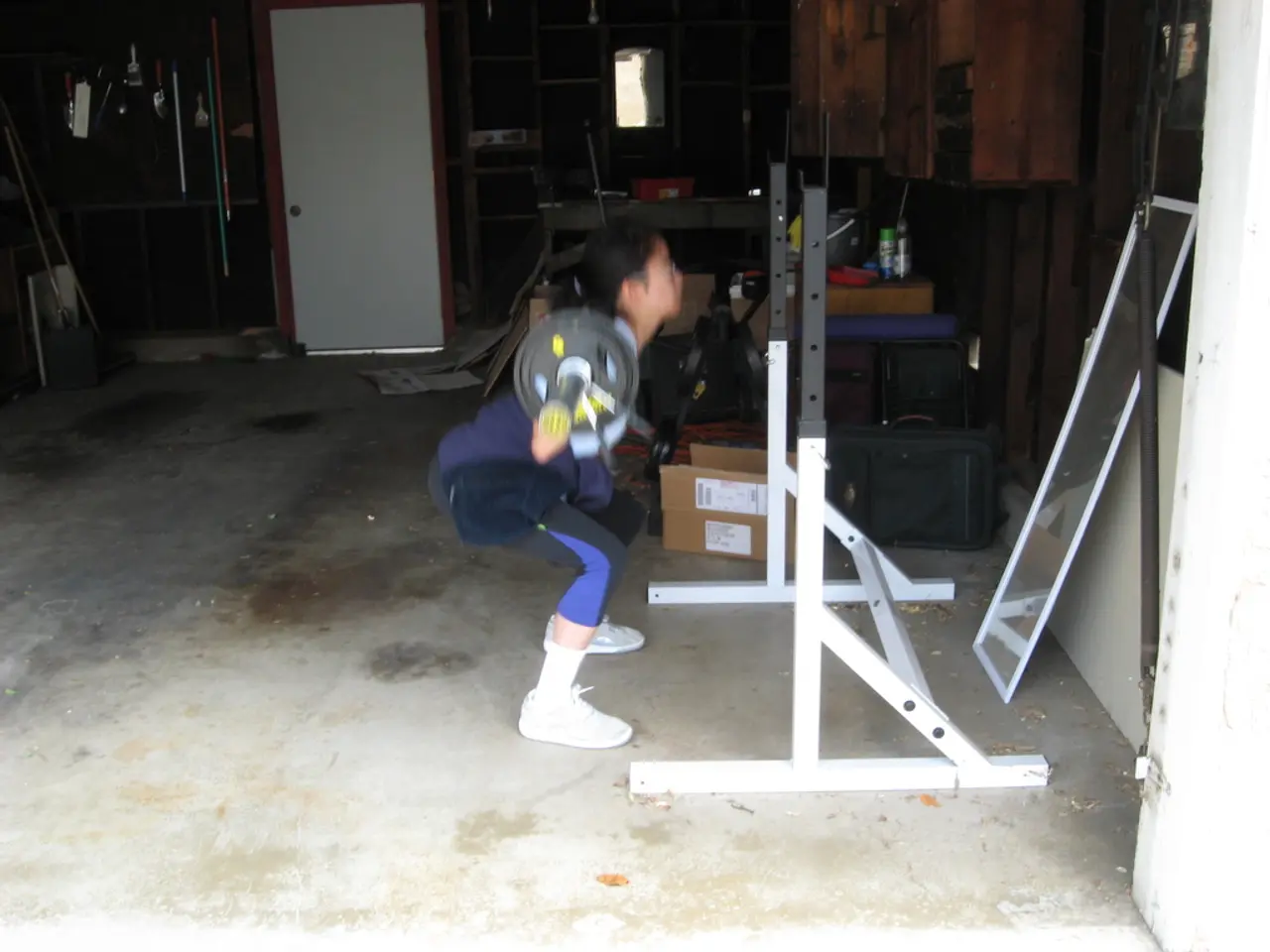Work out at home with minimal equipment: A static-hold routine using dumbbells to strengthen your entire body
In the quest for a healthier and stronger body, a new workout regime has emerged that offers notable benefits for both physical and mental well-being. Isometric exercises, which involve contracting muscles without joint movement, have been found to significantly reduce blood pressure and improve the mind-muscle connection.
Lowering Blood Pressure
A recent meta-analysis of 270 studies revealed that isometric exercises produce the largest blood pressure reductions compared to aerobic, high-intensity interval training (HIIT), or dynamic resistance exercises. After 8–12 weeks, typical reductions are about 7 mm Hg systolic and 4 mm Hg diastolic, which is clinically meaningful and linked to lower cardiovascular risk. Protocols like wall-sits (4 sets of 2-minute holds, 3 times per week) or isometric handgrip exercises (holding 30–50% max grip for 2 minutes) have been effective methods to achieve these results [1][2].
Enhancing the Mind-Muscle Connection
Isometric exercises also enhance neuromuscular control and motor unit recruitment precision. Sustained muscle holds create continuous tension, which recruits more motor units and improves the brain’s ability to activate specific muscles deliberately. For example, research showed higher electromyographic activation during single-leg isometric holds compared to traditional dynamic movements, indicating improved muscle engagement and control [1][3]. This heightened neuromuscular awareness can lead to improved strength gains, posture, and functional movement patterns.
Additional Benefits
Isometric exercises offer joint-friendly, low-impact strengthening that supports rehabilitation and arthritis management without stressing the joints [1][3].
The 20-Minute Isometric Workout
This workout consists of 7 exercises and requires a pair of 4-10lb dumbbells, an exercise mat, and no prior equipment. Each exercise is performed for 30 seconds, followed by a 20-second rest, and a full minute of recovery in between sets. The workout is performed in 3 rounds.
- Squat Hold: Stand with feet hip-width apart, push hips and butt back, and lower until thighs are parallel to the floor, keeping chest up and gaze forward. Hold this position.
- Static Lunge: Stand with feet shoulder-width apart, take a step back, lower until knees are at roughly 90° angles, and hold this position. Swap legs.
- Wall Sit: Lean back against a wall and lower yourself until your upper legs are parallel to the floor, with knees at roughly a right angle. Maintain the position by keeping your hands back against the wall or resting on your hips, and squeeze your core and butt muscles to hold the position.
- Biceps Hold: Hold a dumbbell in each hand, arms close to your sides, with palms facing up (supinated grip), and curl the weights up as in a biceps curl, pausing at 90° and holding this position, keeping your core engaged.
- Triceps Extension Hold: Stand with feet hip-width apart, holding a dumbbell in a vertical position with both hands, raise the dumbbell overhead with straight arms, bend your elbows to lower the weight behind your head toward the centre of your back, and hold this position, feeling the tension in the back of your upper arms.
- Overhead Press Hold: Stand with feet shoulder-width apart with a dumbbell in each hand, rest the weights on your shoulders, then press them overhead, fully extending both arms, and hold this position with the weights overhead and arms locked out before lowering them back down.
- High Plank: Start from a tabletop position, lift your knees off the floor and extend your legs behind you, creating a straight line from your head to your heels, and hold, keeping your core and glutes tight to maintain the position.
Preparation and Recovery
A 5-minute warm-up is recommended before starting the workout, which includes 20 repetitions each of squats, lunges, jumping jacks, hip openers, and arm circles. After the workout, a 5-minute stretch is recommended.
Performing isometric exercises can help build a strong mind-muscle connection. If you're on a budget, there are also affordable options for adjustable dumbbells available, which are suitable for home training. If you're looking for space-saving home gym equipment, consider adjustable dumbbells, which allow you to pick the perfect load for every type of workout and fitness level.
A study published in the British Journal of Sports Medicine found that isometric exercises are beneficial for lowering blood pressure [4]. This 20-minute isometric workout is a scientifically supported, time-efficient way to lower blood pressure meaningfully while simultaneously enhancing the mind-muscle connection through improved neuromuscular control and muscle activation precision [1][2][3].
- Incorporating isometric exercises into your workout routine can provide additional benefits beyond physical strength, as they have been found to significantly reduce blood pressure, improving cardiovascular health.
- Aside from lowering blood pressure, isometric exercises play a critical role in enhancing the mind-muscle connection by improving neuromuscular control and motor unit recruitment precision, leading to better strength gains, posture, and functional movement patterns.
- For those seeking a home workout option, isometric exercises are a perfect choice as they offer joint-friendly, low-impact strengthening that can support rehabilitation and arthritis management while providing a scientifically supported, time-efficient way to lower blood pressure and build a stronger mind-muscle connection.




